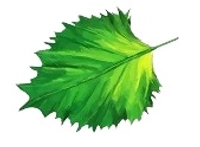Brassia Actinophylla (Queensland Umbrella Tree)
Brassia Actinophylla, commonly known as the Queensland Umbrella Tree, is a striking evergreen tree native to the rainforests of Queensland, Australia. Known for its large, glossy, palmate leaves that form an umbrella-like canopy, this tree adds a tropical flair to any landscape. Its unique appearance, combined with its easy care requirements, makes it a popular choice for gardens and parks.
Benefits:
- Aesthetic Appeal: The Queensland Umbrella Tree is valued for its lush, glossy, green foliage that forms a dense, umbrella-shaped canopy. Its striking appearance makes it an excellent choice for landscaping in tropical and subtropical climates.
- Shade Provider: Due to its large, dense canopy, this tree provides ample shade, making it ideal for creating cool, comfortable spaces in gardens, parks, and along streets.
- Wildlife Habitat: The tree attracts various species of birds and insects, providing a habitat and food source for local wildlife.
- Low Maintenance: Brassia Actinophylla is relatively easy to care for and can thrive in a variety of soil types and conditions, making it suitable for both residential and commercial landscaping.
- Air Purification: Like many other trees, the Queensland Umbrella Tree helps improve air quality by absorbing carbon dioxide and releasing oxygen, contributing to a healthier environment.
Plant Care Instructions:
- Sunlight: Brassia Actinophylla prefers bright, indirect light but can tolerate some direct sunlight. It is best suited for partially shaded areas, especially in hot climates.
- Soil: This tree thrives in well-drained, loamy or sandy soil. It can tolerate slightly acidic to neutral pH levels.
- Watering: Keep the soil consistently moist, but avoid waterlogging. Water the tree regularly, especially during dry spells, but ensure the soil is well-drained to prevent root rot.
- Fertilization: Apply a balanced, slow-release fertilizer during the growing season (spring and summer) to encourage healthy growth. Organic compost can also be used to enrich the soil.
- Pruning: Prune dead or damaged branches to maintain the tree’s shape and encourage healthy growth. Regular pruning also helps improve airflow around the tree.
Common Problems and Solutions:
- Yellowing Leaves: This can be a sign of overwatering or nutrient deficiency. Ensure the soil is well-drained and apply a balanced fertilizer to restore nutrients.
- Pest Infestation: Aphids, scale insects, and mealybugs may occasionally attack the tree. Use neem oil or insecticidal soap to control these pests.
- Leaf Drop: Excessive watering or sudden temperature changes can cause leaves to drop. Maintain consistent watering and avoid placing the tree in drafts or areas with fluctuating temperatures.
- Fungal Diseases: In humid conditions, the tree may develop fungal issues such as powdery mildew. Improve air circulation around the tree and apply a fungicide if necessary.
Please Note: Images are for reference purposes only. Actual product may vary in shape or appearance based on climate, age, height, etc. The product is replaceable but not returnable. Plants will be delivered in black nursery poly bag or pot unless mentioned on the product page.
